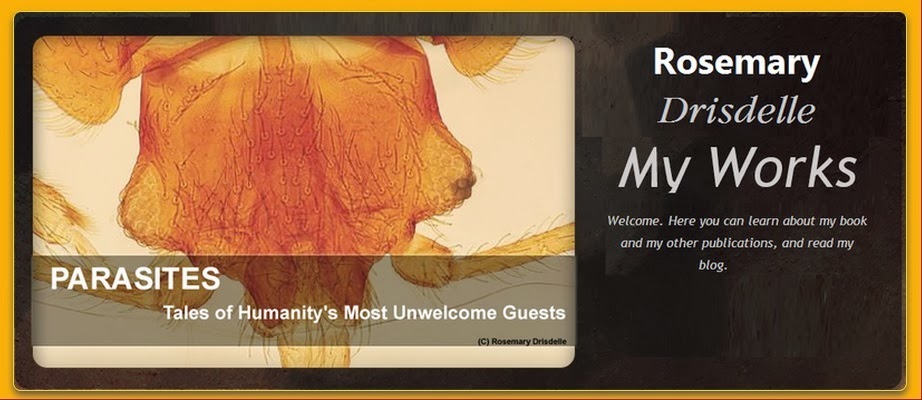 |
| A beautiful Entamoeba histolytica trohpozoite; Image by Stefan Walkowski, CC BY-SA 3.0 |
Entamoeba histolytica has always had us guessing. It’s the only Entamoeba species that causes disease. Why? It causes amebic dysentery in some people and not in others. Why? How does it invade tissue? Fedor Lösch was the first to describe the organism (1875), which he found while looking for the cause of dysentery in a Russian patient. Lösch guessed that the organism he called Amoeba coli was not the cause of the illness, but he guessed wrong.
Prevalence of Entamoeba histolytica
For more than a hundred years after its discovery, we thought E. histolytica was much more common than it actually is. During that time, researchers gradually separated out the look-alikes: Entamoeba coli (1879), E. hartmanii (1912), E. polecki (1912), E. moshkovskii (1941), and finally E. dispar (1978). We now know that many organisms formerly identified as E. histolytica were actually the morphologically identical, but nonpathogenic E. dispar. Estimates that 10% of the population is infected with E. histolytica have been revised downward to 50 million symptomatic cases (although many infections are asymptomatic) (Medscape). In reality, nobody really knows.
How Did Entamoeba histolytica Become Pathogenic?
Entamoeba histolytica differs from the other Entamoeba species in that it can invade tissue. It can cause amebic dysentery, with ulcers and abscesses in the intestine, and it can travel further to set up abscesses in other places - usually the liver, sometimes the lung or the brain.
I can see that causing diarrhea might be to the amoeba's advantage: this would result in organisms being rapidly expelled from the body to contaminate the environment, with other potential hosts being exposed. But diarrhea usually means the release of the vulnerable trophozoite stage, not the hardier infectious cyst stage, and organisms in deeper abscesses would never reach the outside world. How does tissue invasion benefit the parasite?
Maybe it doesn’t. One theory suggests that the ability of E. histolytica to invade and feed on human tissue is coincidental: the same thing that enables it to feed on bacteria and other organisms, and compete for food in the intestine, just happens to enable it to feed on our cells as well. That would make abscesses in the liver and other organs simply bad luck for both parasite and host.
Another theory explores the possibility that virulence develops when hosts are crowded together. When diseases are easily passed from one host to another due to crowding, the organisms that quickly make people sick and contagious do better than the slower-moving ones. This could explain how E. histolytica might have evolved as a pathogen in the cooler climate of Europe.
Where Did Entamoeba histolytica Evolve?
The recent discovery of E. histolytica in a Jerusalem cesspit dating back to Medieval times (15th and 16th century) is suggested evidence that people were visiting the city from Europe. Interestingly, E. histolytica has been confirmed in a number of European coprolites dating back as far as 500 BCE. But very few coprolites from tropical locations have been tested for E. histolytica and the evidence might be gone after so long in a tropical climate.
Did E. histolytica spread around the world from Europe? Europeans certainly had it and spread it, but I find it difficult to believe that E. histolytica evolved in what is today Europe for a number of reasons:
- It is an ancient and predominantly human parasite, and humans didn’t evolve in Europe.
- It is vulnerable to cold, dying at temperatures below 5C. This is in contrast to other parasites such as Giardia and Cryptosporidium, which survive much colder temperatures and are more common in cooler climates, even today.
- It is relatively uncommon in Europe and other temperate climates today, but very common in the tropics.
- A number of early accounts from other parts of the world appear to describe amoebic dysentery. The earliest of these came from 1000 BCE in India, and Avicenna’s writings from the Middle East around 1000 CE have good descriptions of both amebic dysentery and liver abscess.
The mysteries remain unsolved. I’m interested to see whether further research can resolve them. Meanwhile, E. histolytica continues to cause an estimated 100,000 deaths annually.
Further Reading
Cox, F. E. G. 2002. "History of Human Parasitology." Clinical Microbiology Reviews 15(4) 595-612 doi: 10.1128/CMR.15.4.595-612.2002
Harrison, Alan. 2015 “500 Year Old Toilet in JerusalemReveals Clues About Long-distance Trade and Travel in the Medieval Period" Bugbitten
Roberts, Larry S., and John Janovy Jr. 2009. Gerald D. Schmidt & Larry S. Roberts’ Foundations of Parasitology. Boston, McGraw Hill.
Samie A, ElBakri A, and AbuOdeh R. 2012 "Amoebiasis in the Tropics: Epidemiology and Pathogenesis." Current Topics in Tropical Medicine, Dr. Alfonso Rodriguez-Morales (Ed.), ISBN: 978-953-51-0274-8, InTech
Sargeaunt PG, Williams JE, and Grene JD. 1978 “The Differentiation of Invasive and Non-invasive Entamoeba histolytica by Isoenzyme Electrophoresis.” Transactions of the Royal Society of Tropical Medicine and Hygiene 72 (5): 519-521 doi:10.1016/0035-9203(78)90174-8
Singh U, Huston CD. 2012 “Evolution of Entamoeba histolytica Virulence.” In Evolution of Virulence in Eukaryotic Microbes, L. David Sibley, Barbara J. Howlett, Joseph Heitman (Eds.) Chapter 22.



